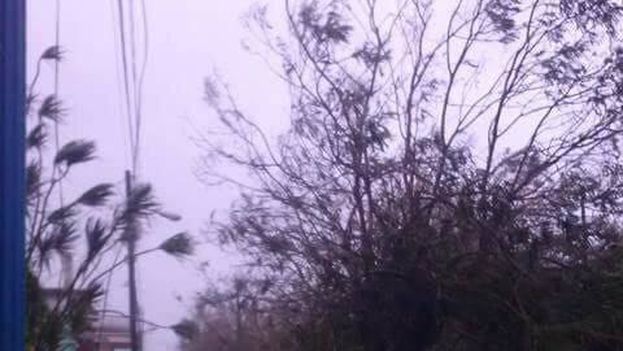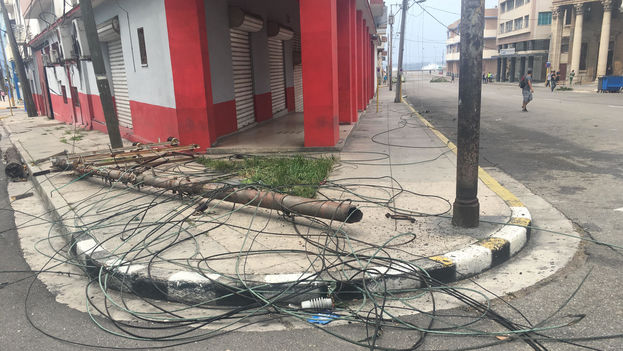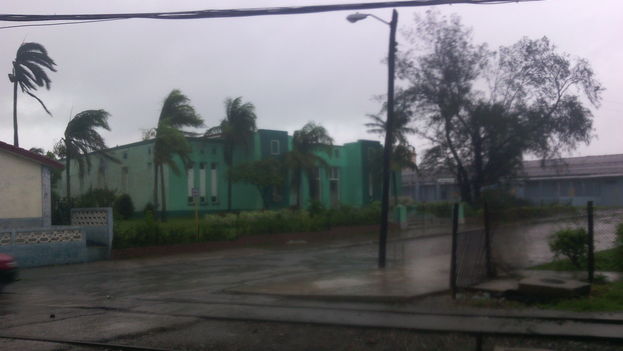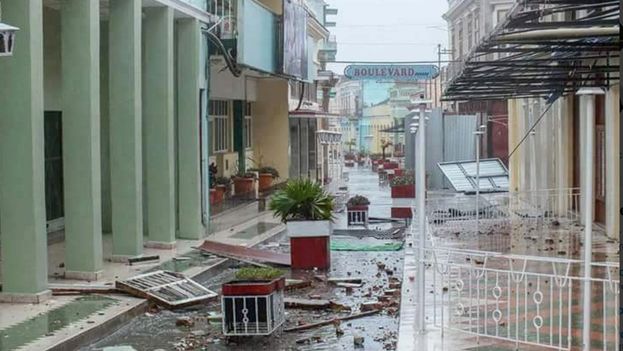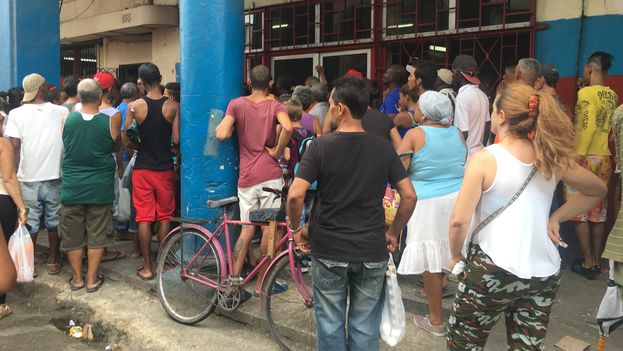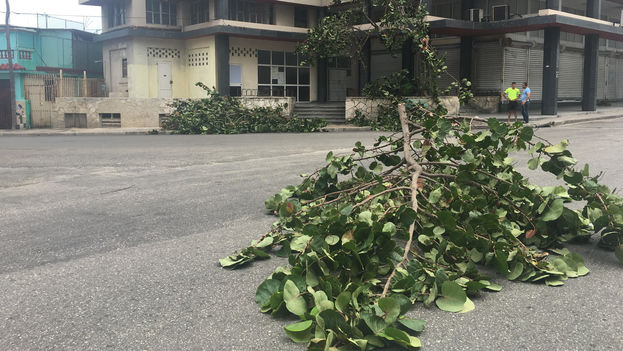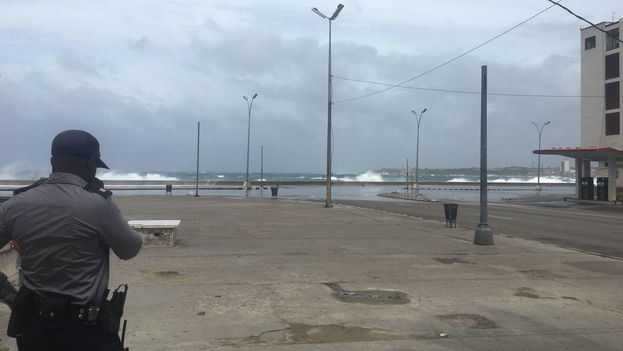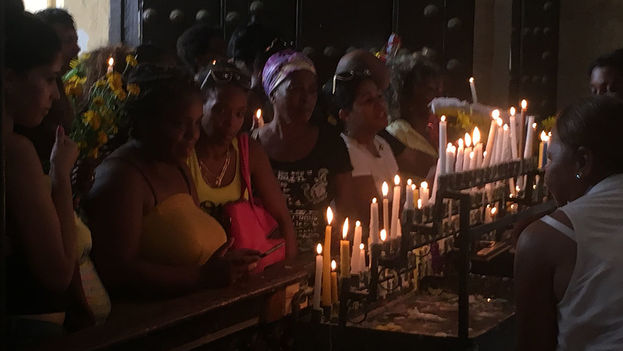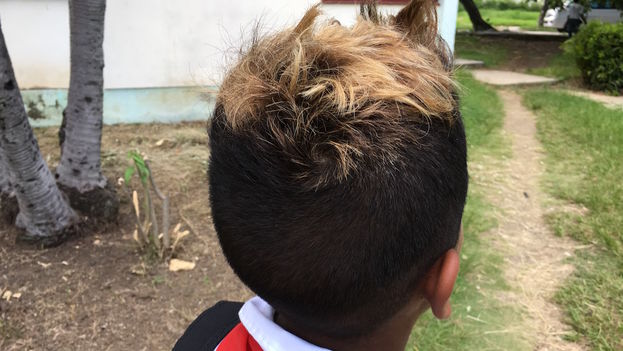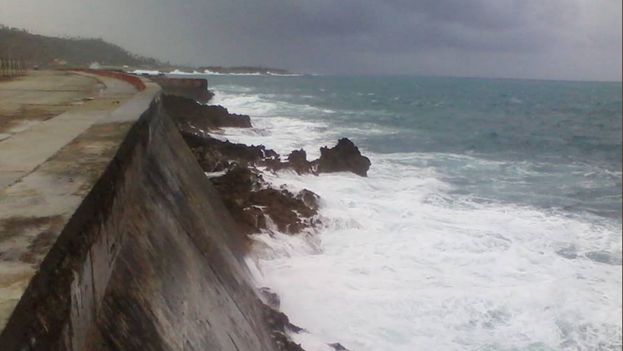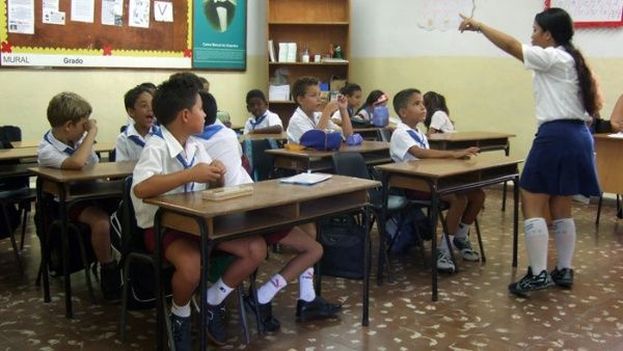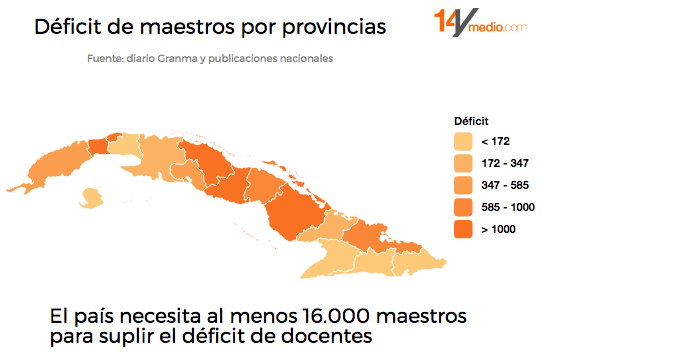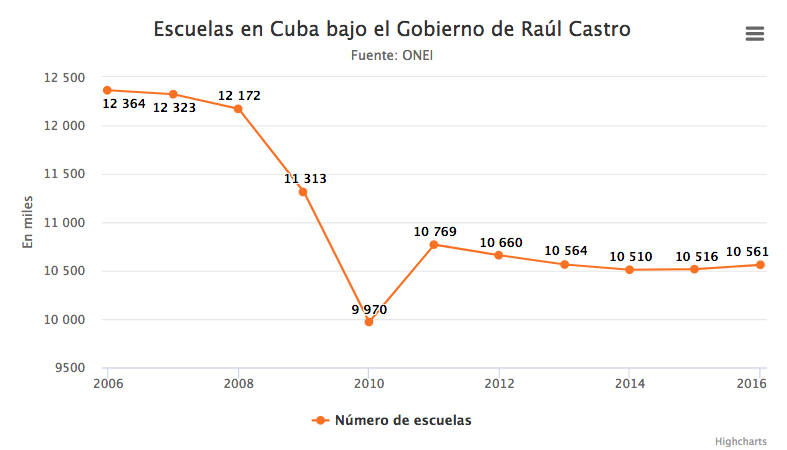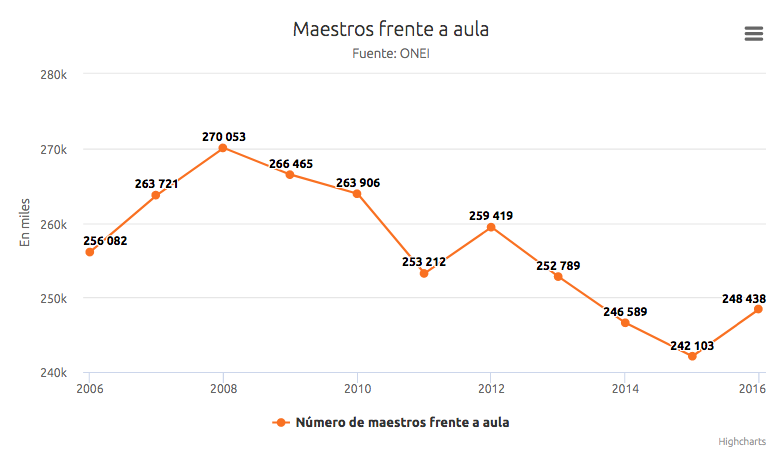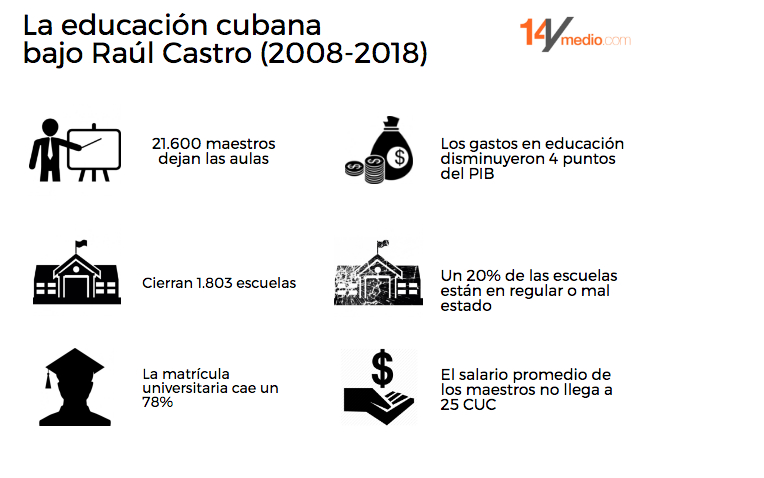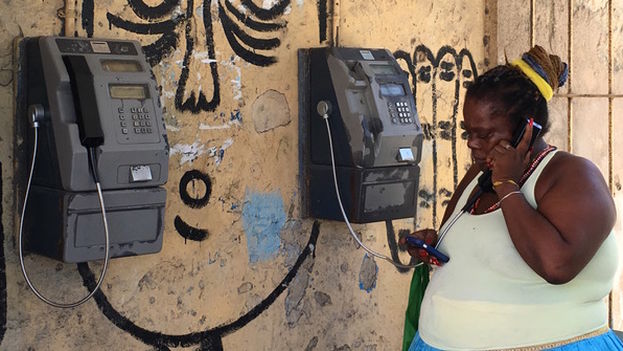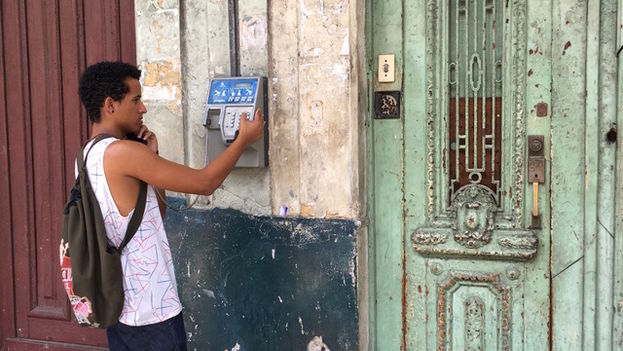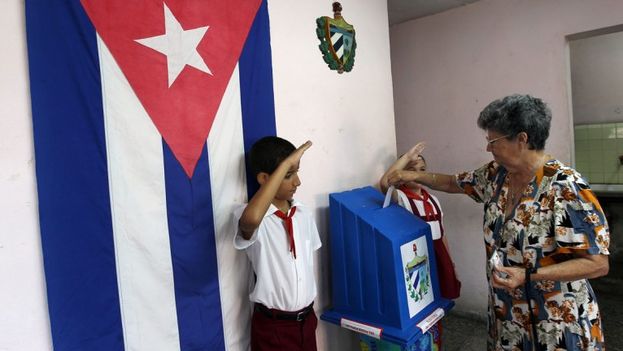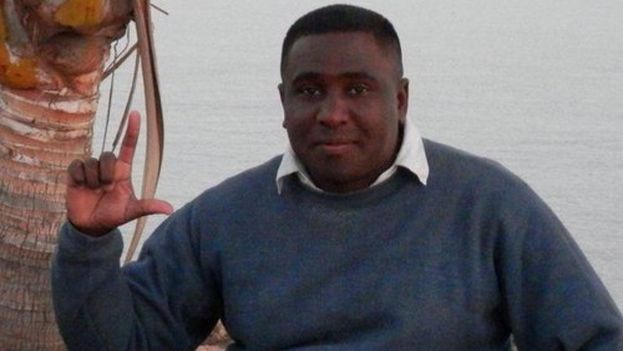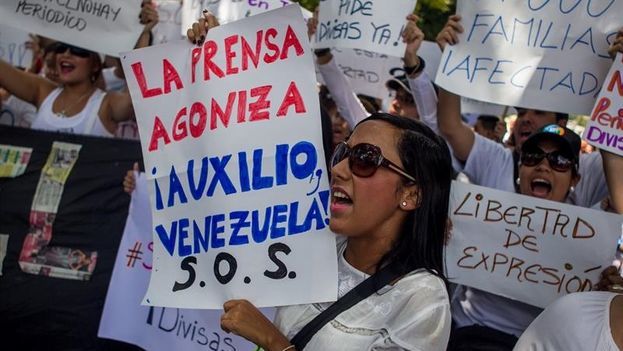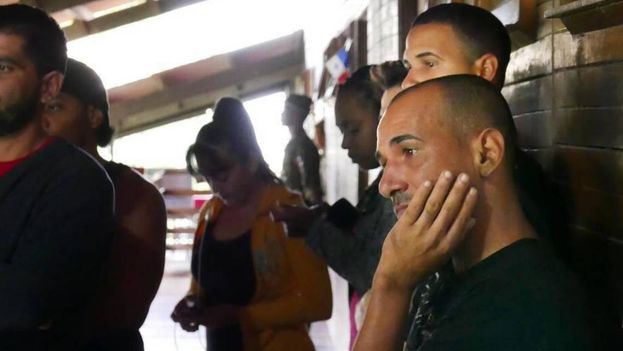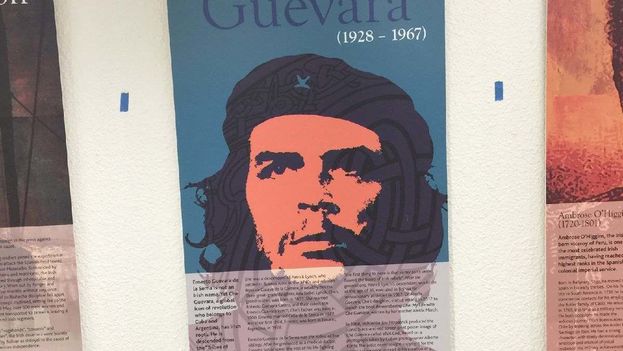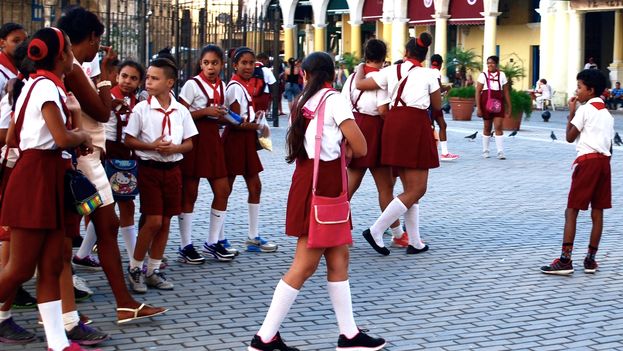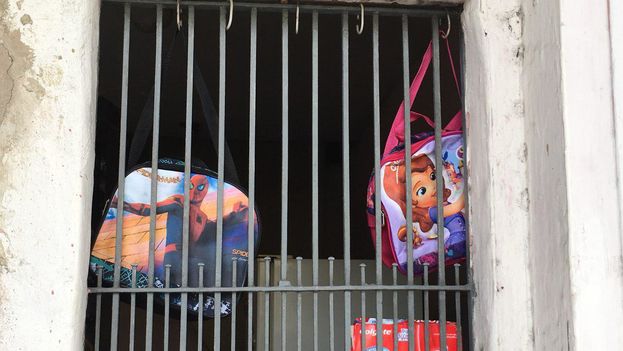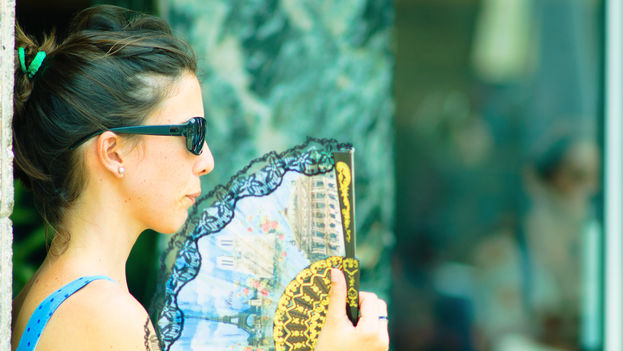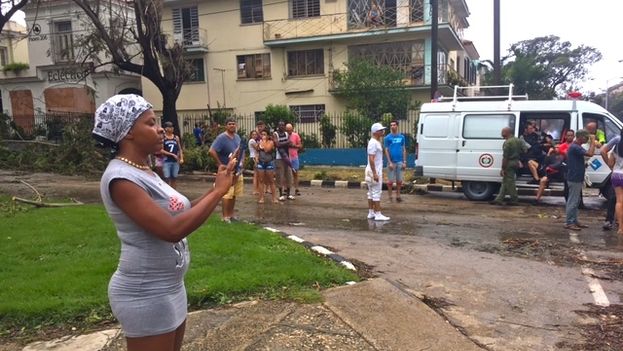
![]() 14ymedio, Ricardo Fernandez, Camaguey, 11 September 2017 – Yosvani has been in a long line for an hour outside the polyclinic, though he is not sick or injured. Hurricane Irma left him with no electricity and he is anxious to recharge his cell phone battery to try to communicate with his friends and family and to find out how they are. Hundreds of residents have been crowding the Camagüey’s emergency rooms since Saturday to benefit from the generators installed there.
14ymedio, Ricardo Fernandez, Camaguey, 11 September 2017 – Yosvani has been in a long line for an hour outside the polyclinic, though he is not sick or injured. Hurricane Irma left him with no electricity and he is anxious to recharge his cell phone battery to try to communicate with his friends and family and to find out how they are. Hundreds of residents have been crowding the Camagüey’s emergency rooms since Saturday to benefit from the generators installed there.
Since the lights went out, something more than 48 hours ago, Yosvani knows nothing of his family on Florida beach, one of the places most affected by the powerful hurricane that touched down in Cuban territory as a category five. “I’m going crazy,” he says in the endless line to which everyone arrives with a charger and a mobile phone or a tablet in hand.
“Right now there are two things in this city that are worth their weight in gold: drinking water and a connection where you can charge a cell phone,” says the young man. Everyone in the line has a story of desperation. continue reading
“My parents are from Esmeralda and they say that their world is gone, but I have not even been able to find out if they managed to evacuate in time,” explains Roxana, a woman in Camagüey with two children whose home was also damaged. “We lost many roof tiles and the yard is devastated, with all the trees on the ground,” she laments.
When her turn in line arrives, Roxana opens her bag and takes out three cell phones. “They are from my neighbors, who can’t come here and urgently need to receive calls from their children in Miami,” she says. She plugs in each phone and watches with relief as the battery bars grow. “One, two, three …” she says softly.
Those behind her in line try to rush those in front of the prized outlet. “Don’t wait to fill the battery, just take a little bit and leave something for the rest, everyone has the need to communicate,” complains a man.
A pregnant woman approaches to ask to be be allowed to cut the line, but a hullabaloo ensues. “Everyone here has a different tragedy. The person who doesn’t have missing relatives is a missing person for their family,” complains another who is waiting.
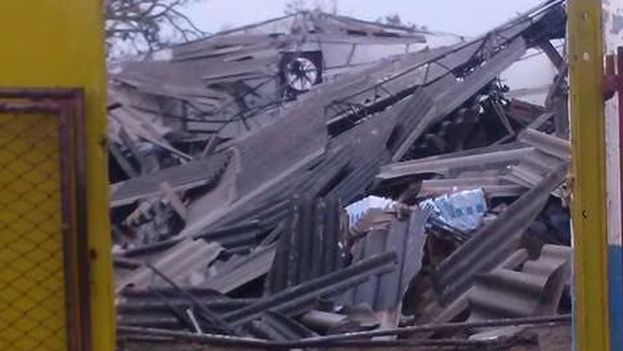
The nurses come and go trying to get around the line that fills the hallway. Medical staff dislike the crowds that fill the corridors, but they understand that, for many, electricity is now the best cure, the most sought after remedy.
Between 2004 and 2014, the Government imported 52,292 generators at a value of 1.3 billion dollars. The commissioning of these units was one of the last campaigns promoted by Fidel Castro. Over time, the deterioration and theft of fuel has diminished their use, but in moments of massive electrical cuts they regain their importance.
“Last night they brought in an extension with multiple sockets and the load was so heavy that they burned out the outlet,” complains polyclinic security staffer Rodolfo Ramírez Esquivel to 14ymedio,” so we only allow people to connect equipment and not extensions.”
However, the need to recharge the devices is so pressing that many people ignore the recommendations. “I brought an eight-outlet powerstrip and put it in my backpack with the cellphones of my entire family without them noticing, because outside the backpack I was charging two more,” says a resident.
Everyone fears that the electricity cuts will be prolonged due to the serious damages suffered by the electrical lines in Camagüey province. Some have tried alternative ways to recharge their cellphones without having to go to the polyclinics.
“Days before the hurricane a cousin emailed me a trick to charge a cell phone with a 9-volt battery, so I started looking around my house and I found one that solved the problem a little,” says a young man standing in line with his mother to use the clinic’s outlets.
The damage to poles, transformers and cables has been so extensive in the central and eastern part of the country that Raúl Castro, who is also president of the National Defense Council, ordered that support brigades be created in each municipality to “guarantee the restoration of the electricity” according to an official note.
Those in Camagüey who are starting their third day without power greeted the news with displeasure. The weather is still humid although the rains have stopped. The streets remain covered with a mixture of mud, leaves and tree branches. On the stands in the markets there is nothing but bananas and some tiny papayas that must have fallen due to the winds.
A woman walks past the polyclinic with a bag of eggs and a group surrounds her to inquire anxiously where she bought them. Provisions are unavailable and agriculture in the area has suffered a devastating blow that will take months to recover. Most affected are bananas, but beans and vegetables have also suffered.
The chicken farms on the outskirts of the city are the scene of massive deaths, several of them have lost their roofs and are flooded, according to testimonies of several farmers in the area. Hopefully there will be images circulating in the next few days, when neighbors recharge their mobiles and send them out.
Every kilowatt is worth whatever people ask for it and more, in a city where public transport has been cancelled and electric motorbikes are the only way that many can get around.
“There are places where they do not let you connect to recharge [a motorbike], but there are always people willing to help,” explains Yusnier Ramirez, a young man in line to recharge his cell phone at the medical post in front of Plaza Méndez. “There are also those who recharge their motorbikes, but for that we have to pay,” he says.
The urgency to reactivate cell phones grows due to the failures in city’s fixed-line phone network.
“I’ve been waiting for more than two hours,” says another Camagüeyan outside an emergency room. The young man tried to use a rustic solar panel to revive his device, but was unsuccessful. “This polyclinic looks like a disaster zone, but the consultation rooms are empty,” he explains. “We are all here to recharge our mobiles.”

